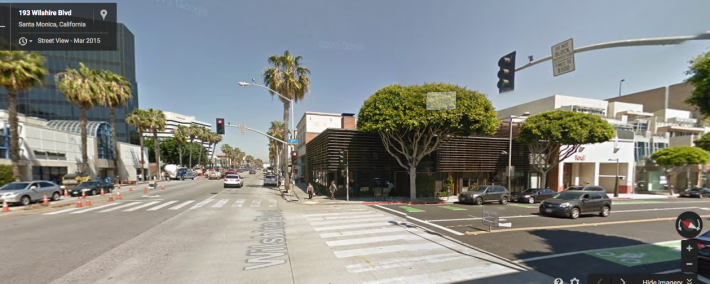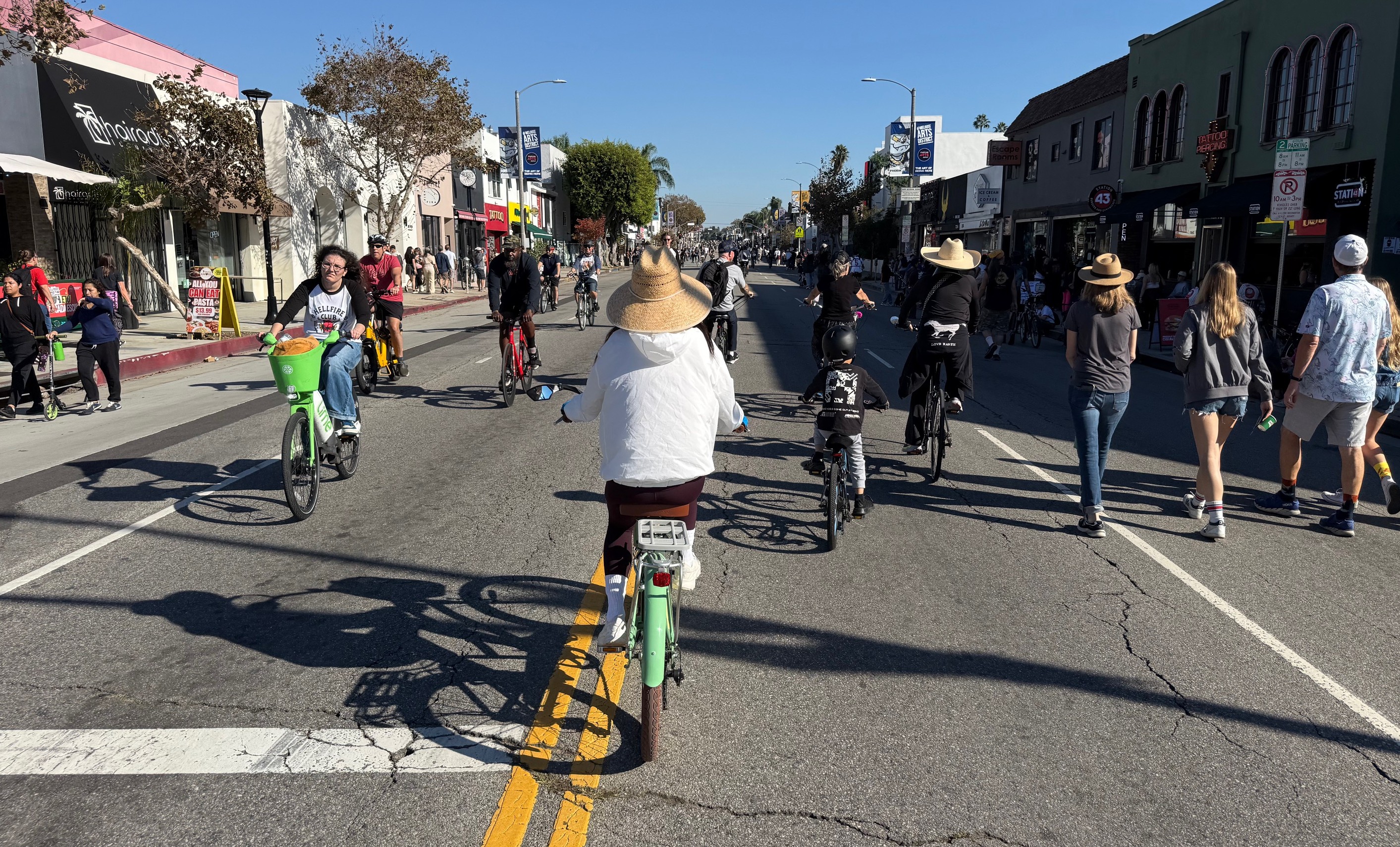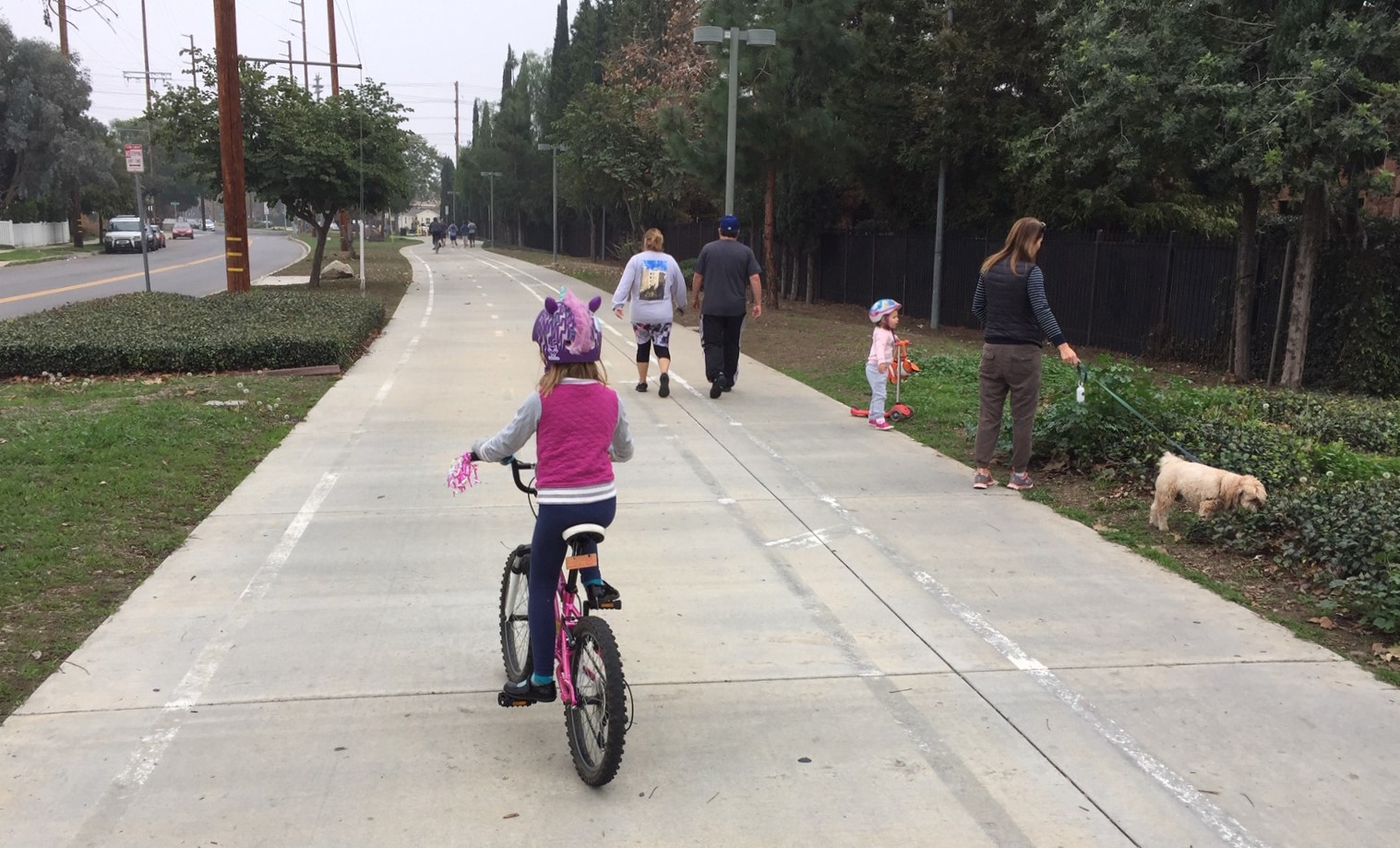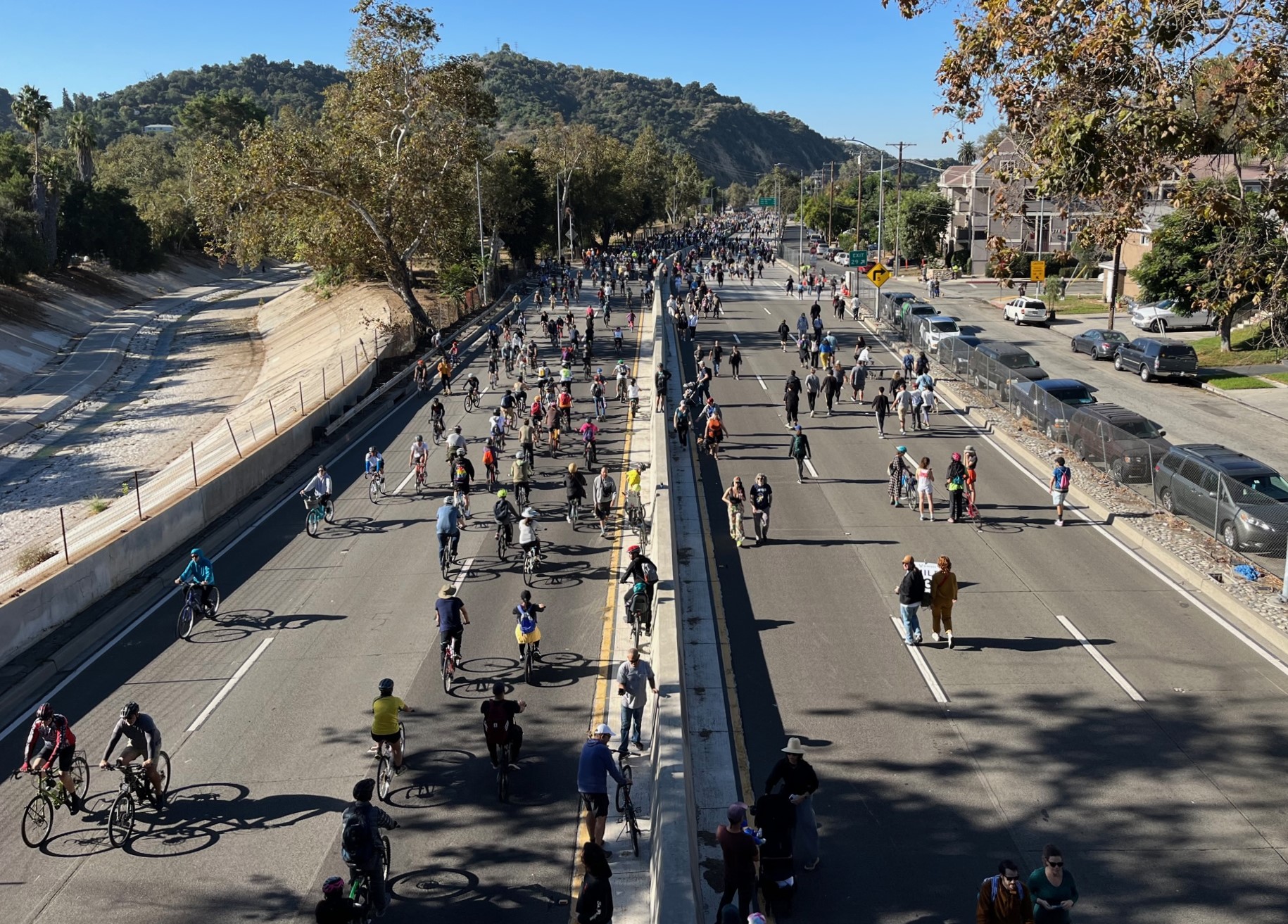
Editor's Note: Streetsblog Los Angeles founding board member Carter Rubin recently finished his Master of Urban and Regional Planning degree at UCLA. In the following article, he recaps the findings from his capstone “client project” for the Urban Design Studio at the L.A. Department of City Planning. His research adviser was the inimitable parking guru, UCLA Urban Planning Professor Donald Shoup. You can read the report in its entirety here.
It’s hard to imagine today, but Santa Monica’s commercial areas – now home to Silicon Beach, tourism and bustling retail – were sleepy, underperforming and shabby just a few decades ago. In an effort to revive its commercial heart in particular, the city approved millions in funding for municipal parking structures in the heart of downtown. These garages still stand today on streets parallel to the Third Street Promenade.
City leaders hoped that this would create a convenient means for potential patrons to reach the Promenade, allowing them to park once and do all their subsequent shopping, dining and recreating on foot, thus keeping the streets clear of excessive car trips. More easy parking seemed like the obvious fix, but those garages alone weren’t enough to generate the commercial transformation Santa Monica sought.
What Santa Monica needed – and eventually got – was a different kind of parking change. The critical policy was to create a by-right process allowing developers to build, and businesses to operate, with less on-site parking. It was a dramatic break from what is typical of virtually every city in America: require every business to provide abundant on-site parking, free of charge to all its patrons, regardless of whether or not the business deems it necessary.
This new policy would ultimately allow small-scale developers and entrepreneurs to find and implement the most successful uses for those properties without having to worry about whether meeting the expensive minimum parking requirements was practical or cost-effective.
That was the change that would ultimately lead to a vibrant commercial district generating significantly more revenue for schools, libraries, transit and other municipal services.
Santa Monica’s Parking Innovation
In 1986 the Santa Monica City Council approved a business assessment district to fund improvements for the Promenade area. Part of that program included this critical piece: it gave developers the ability to opt out of providing the required on-site parking by paying an annual fee of $1.50 per square foot of floor area added for which there was no parking provided. (In other words, if you provided all the typically-required parking, you paid no fee.)
Further, it allowed changes in a given building's land use – say, from a nail salon to a restaurant – without triggering the typical increase in parking requirement from one parking space per 300 square feet to one per 75 square feet. If that business is in an older building that takes up most of the parcel, there’s usually no feasible to adaptively reuse that building as a restaurant – or any other business that has a higher parking requirement than whatever occupies the space presently.
Indeed, much of downtown Santa Monica’s building stock predates parking requirements. So many of its charming and historic buildings take up all or nearly all of the parcel. No room to add parking! If the law requires you to add parking to change a land use to a more productive use, and there’s nowhere to add parking, you either have to tear down the building and build strip style parking or underground parking. And the latter is often infeasible for financial and geometric reasons.
So what we saw in downtown Santa Monica pre-1986 is what we see across many commercial districts with small plots of land: storefronts filled with business just eking it out, not because no one would invest there, but because parking requirements make it essential impossible to invest there without getting a costly and politically perilous variance.
Downtown Santa Monica today, as we know, has thriving pedestrian-friendly retail streets filled with successful restaurants and shops. The question that I wanted to answer in my capstone project was: To what extent was 1986’s flexible parking option responsible?
How We Measured the Impact of Parking Requirements
To determine the impact of the making parking requirements more flexible in downtown Santa Monica, I evaluated what was happening along one of the boundaries of the parking district, where on one side you had the flexible parking program and on the other side you had the standard parking requirements still in place.
It turned out that Wilshire Boulevard, that iconic Southland street, was one of those boundary lines. The north side of Wilshire between 2nd Street and 4th Court was a commercial stretch with the standard parking requirements, and the south side was likewise zoned for commercial uses, but with the flexible parking requirements. Thus, comparing the two sides should reveal the impact of the parking requirements.

To compare the two sides, I measured a series of variables relating to city finances, parking and urban form. The findings were dramatic.
What We Found
The properties in the flexible parking requirement area generated eight times more sales tax revenue per parcel square foot than the properties in the standard parking requirement area. Not only that, the businesses on those parcels generated all that sales tax revenue with a fraction of the onsite parking. Parcels in the flexible requirement area had an average of 4.4 spaces per parcel, while the parcels in the standard-requirement side averaged over a hundred spaces per parcel.

All that extra parking space meant that an estimated 340,000 square feet of prime Santa Monica real estate – blocks from the palm tree–lined bluffs – was dedicated to meeting standard parking requirements. That total represents about 75% of the square footage of the actual leasable space in those buildings.

But the impact of parking requirements isn’t limited to just city finances and floor area. It affects the built environment and the street-level pedestrian experience – especially important in an important commercial district.
So I measured the amount of linear street front that was filled with by ground-floor shops and how much was taken up by parking infrastructure like surface parking lots, driveways and garages. On the flexible-requirement side, 80% of the street front was taken up retail, restaurants and shops – all those things that make a shopping district interesting to walk around. In contrast, the standard-requirements side had only 30% of its linear street frontage dedicated to retail. Contributing to this stark difference is the fact that the standard-requirement side had ten times more street front dedicated to parking infrastructure than the flexible-requirement side.
Particularly revealing was the fact that there were six restaurants on the flexible-requirement side versus only one – a small café that was about the change locations – on the standard parking side. Why does that matter? Restaurants typically have among the highest parking requirements because of their high customer turnover, so they serve as a good “indicator species” for whether a higher parking requirement is precluding certain business. In Santa Monica’s case, an array of successful restaurants in the flexible-requirement study area – i.e. T’s Thai, California Pizza Kitchen, P.F. Chang’s and Hillstone – also generate a lot of sales tax revenue and employ a lot of people.
Conclusions, Implications and Recommendations for the City of Los Angeles
So, one side of Wilshire Boulevard has lots of thriving businesses, less on-site parking and a more pleasant pedestrian environment. The other side has fewer businesses and more parking, including surfacing parking lots two blocks from the Ocean. It’s easy to imagine that an entrepreneur could find a more valuable use of that land if they had the flexibility to develop that lot, which they currently do not.
Since the City of L.A. was the client for my "client project," I wanted to be able to answer the question: What can L.A. learn from this? What neighborhoods would benefit from a more flexible parking requirements?
An obvious candidate for this type of intervention would be Westwood Village, a similarly once-thriving commercial district with older building stock where onerous parking requirements help keep storefronts vacant today.
Additionally, many of Los Angeles’ commercial boulevards are lined with older, pedestrian friendly storefronts. As Mott Smith showed, these buildings cannot be re-purposed without providing the now-required parking or seeking a costly, risky variance; providing that parking in a cost-effective manner often means turning older, pedestrian-friendly shops into strip mall or drive-through Taco Bell type establishments.
Los Angeles could implement an ordinance that allows the adaptive reuse of existing buildings -- without having to meet outdated parking requirements -- on boulevard commercial stretches. This could be modeled after the adaptive reuse ordinance that has helped transform downtown L.A. into a more livable, prosperous community. After all, almost of all of Los Angeles’s great commercial boulevards – Wilshire, Van Nuys, Pico, Vermont, Crenshaw, etc. – are served by frequent bus or rail service and are surrounded by fairly dense walkable neighborhoods.
These are exactly the areas where we don't need to require every business to operate as if every patron will drive alone in a car. On the contrary, we should be encouraging trips by foot, bike and transit in these neighborhoods. In fact, our decades-old parking requirements have encouraged driving and traffic, and they have degraded the pedestrian environment.
With a new Mayoral administration in place and a comprehensive zoning code rewrite in the works, now is the perfect time to make Los Angeles’s parking requirements more flexible, so we can build the livable, walkable and prosperous communities L.A. deserves.






